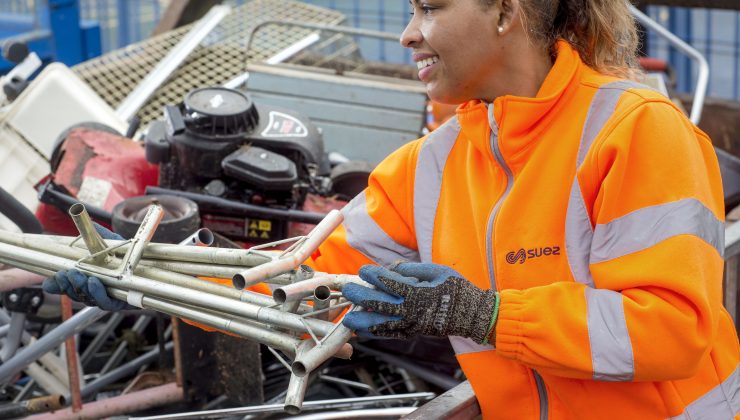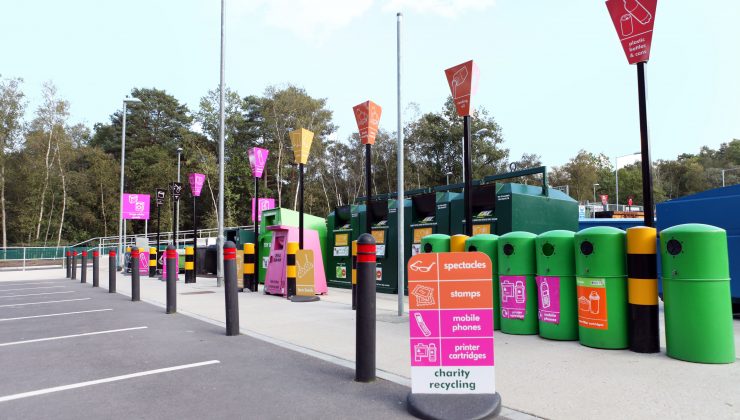
Collection
Food waste collected from homes in Surrey is delivered – either directly or via a waste transfer station – to the reception hall of the anaerobic digestion facility at the Eco Park.
Pre-treatment
First the food waste must be pre-treated to remove contaminants such as packaging and it is also diluted with water. Heating this waste mixture to 70°C for one hour kills all pathogens in the food.
Digestion
Now pasteurised, the waste is fed into the anaerobic digester tank. As with composting, bacteria break down the waste, converting it into biogas and a residue, which is called digestate.
Energy
Gas piped from the digester is used to generate electricity. See the latest figures here.
Digestate
Water is removed from the digestate in a centrifuge and then reused in the process. The digestate contains nutrients and, after maturing, is used as a biofertiliser to improve soil for agriculture.


